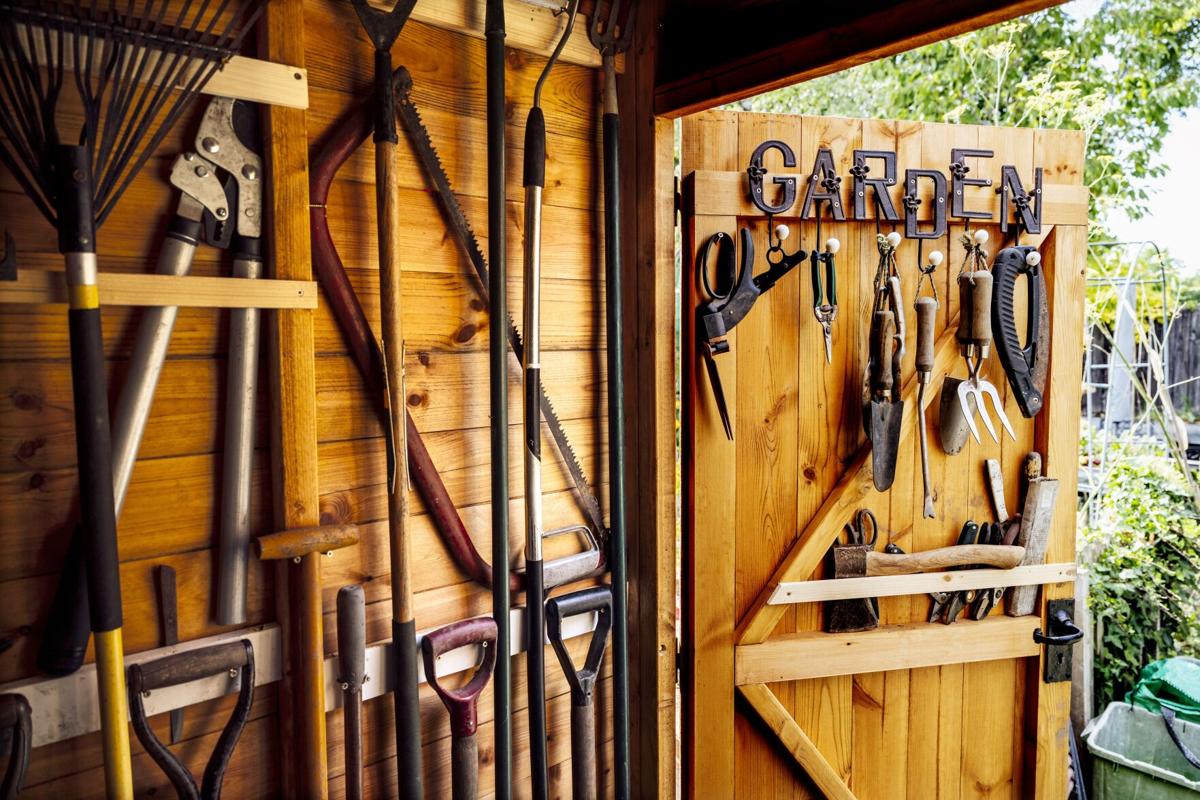Garden tools make our lives easier, but they may not last long if you leave them outside. The harsh desert sun and occasional rain are enough to cause rust and destroy tool handles. To protect your tools, it’s helpful to have some tool storage in your yard.
Shaded and enclosed tool storage options are best to keep sun and rain off your tools. If you have the space and budget for a larger shed, you will also have room to store other gardening supplies such as potting soil, fertilizers, frost cloths, and the like. You may also have room for a potting area. However, you can still protect your tools even if you don’t have much space in your yard. Below I list various options for tool storage with some suggestions on where to find them. You can also read my article "How to take care of your gardening tools" for more information.
Larger sheds
These are great if you have the space and budget for them. Sheds that come in kits can be built out of treated wood or metal and can be put up by an ambitious DIY’er in a day or two (depending on the size). You can also choose to build one from scratch, in which case you can use any building material you'd like. Prices vary greatly based on material, size and labor needed to put it together, anywhere from several hundred to several thousand dollars. Companies like Home Depot will also build your shed for you if you purchase a kit from them and pay for the build.
Larger sheds will usually require some type of flooring and foundation, which is sometimes included, but may need to be installed by the homeowner. Some require a concrete pad. As long as your shed is smaller than 200 square feet and does not have any electrical hookups, you do not need a permit from the City of Tucson or Pima County. Some exceptions may apply, so check the City or County building codes to be sure.
These types of sheds are not portable. On the plus side, they offer lots of storage for tools, vehicles, wheelbarrows, garden furniture and many other yard items. You can also put up shelving, pegboard and hangers of various types to organize your equipment.
In our climate, we generally don’t need to worry too much about snow loads, but we do need to worry about wind. Particularly with larger sheds, make sure that it’s properly fixed to its foundation (assuming it has one) so that it doesn’t blow away in a high wind. You also need to check the shed’s wind rating to ensure that it can withstand the conditions in your yard. Any material you use will be affected by our strong sun and will require some upkeep, such as periodic painting.
Small sheds
These usually have a simple shed roof and can be placed up against a house or garden wall to minimize their footprint. They are usually roughly the size of a coat closet. They can be made of metal, treated wood or plastic resin. One advantage of these smaller sheds is that they are easily moved to different locations should your garden layout change. Price depends on size, but they usually run between $200-500. They may be approximately person-high, in which case you can walk in to them (if they are large enough). They also come in shorter heights, if you don’t necessarily need the extra height. I highly recommend getting a type that allows you to put in shelves and hangers so you can utilize the vertical space efficiently.
Other storage options
You can also use other storage solutions for tools. Smaller tools can be placed in UV-proof plastic tubs to protect them from sun and rain. Larger tubs can be used for storing fertilizer, bags of soil and similar medium-sized items. Tubs can then be stored on weatherproof shelves.
Longer tools like shovels and rakes can be placed in tool caddies and then stored in a covered area of your yard or under a roof overhang. You can also get a tarp to cover these. If you’re fortunate enough to have a garage or other covered yard area, tools can also be hung using wall-mounted racks and pegboards.
So you’re interested in creating a balcony garden? Here are five tools you’ll need to get started.





